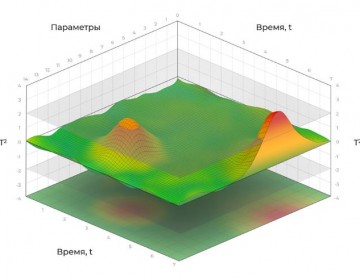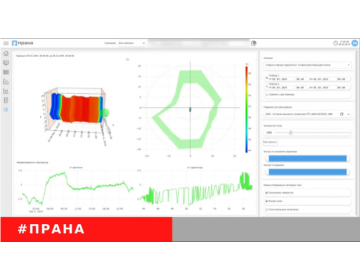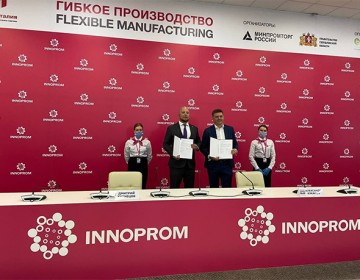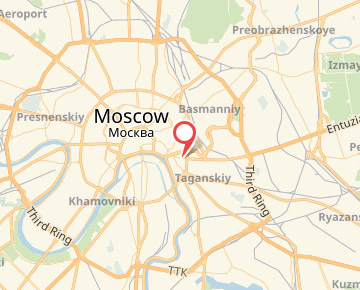Predicting risks: how predictive analytics will change the oil and gas industry
It becomes more and more difficult, from year to year, to ignore the technological paradigm. Digital transformation encompasses, to one degree or another, basic infrastructures and thus extends to many industries. Businesses actively introduce a digital toolkit allowing them to increase production efficiency, estimate possible risks, precisely plan repair campaigns, and optimize logistics.
Predictive analytics and remote monitoring systems are one such tool. In energetics, PRANA — a system manufactured and successfully adapted to meet the needs of the oil and gas industry by ROTEC — has become the industry standard.
Transition challenges
When introducing the system into the oil and gas industry, the developers faced a significant problem: varying process and operation conditions of equipment between different industries. Power machines run in steady-state mode most of the time. Operation of turbines and other machines used in the oil and gas industry includes many more transition modes with fast starts and stops. This means that monitoring systems that mainly use statistical mathematical models to monitor the equipment condition will not be quite efficient for some oil and gas facilities.
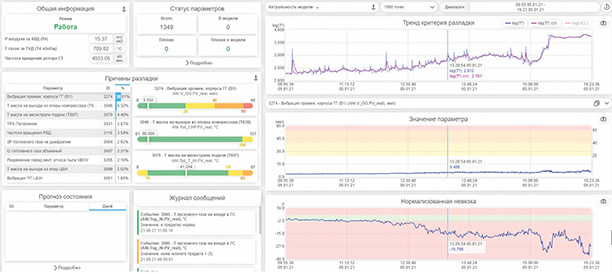
Example of how a statistical model works in an abnormal situation. Increasing vibrations, though technically remaining within the permissible range, still lead to a rise in the integral condition criterion of the machine. Combined with other model parameters, its behavior is unusual and indicates an abnormal technical condition.
As a solution to the problem, the developers have suggested that a hybrid digital model, where statistical mathematical modeling is combined with physical mathematical models, should be used for equipment operating in extreme modes. According to the developers, this will allow:
- more precise prediction of possible emergency situations;
- identification of a specific defect cause with a high degree of probability;
- more efficient recommendations as to further system actions.
To test the hypothesis about the practical effect from the combination of two different methods, ROTEC has developed a new PRANA-based prototype at the premises of a gas transporter.
Hybrid model: how it works
As expected, the hybrid model made it possible to encompass most operating modes of equipment, including transitions. With their different approaches to evaluating the machine condition, statistical and physical models have supplemented each other, dramatically improving prediction accuracy.
In steady-state modes, excellent convergence has been demonstrated by the statistical model that is a kind of the reference digital portrait of equipment. It relies on a set of data about normal operation of a machine in various modes. The system compares current and ideal parameters and displays the varying technical condition of equipment in real time.
This method is best suited to long-term forecasts as it allows the overall condition of equipment to be evaluated and the trouble to be localized where possible.
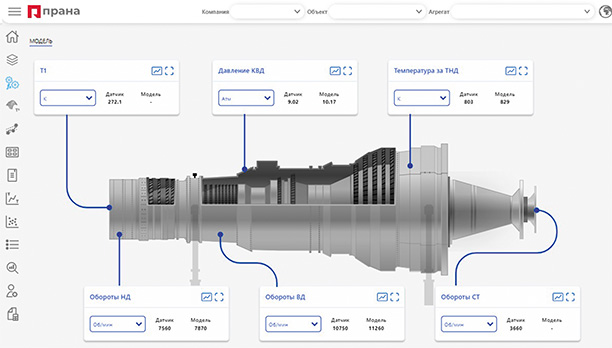
Interface example showing the physical model parameters of a gas generator and power turbine within a gas compressor unit.
The physical model has provided a more detailed picture of machine operation over short time intervals (within ten minutes), primarily under extreme loads. The principle of the method is to simulate the operation of equipment used in a process. The model is cyclically reproduced over time, allowing reference parameters of equipment components to be calculated for various modes. The obtained calculations are readings from virtual sensors that are generated by the model.
Divergence between actual parameters and those estimated by the physical model allows a clear determination of which component has malfunctioned and identification of a specific defect cause. As an additional benefit, the method also offers the possibility of simulating machine behavior with an induced fault in order to analyze further behavior of the system with a similar defect. In the long run, this will prevent accidents related to habitual equipment failures.
The prototype of the hybrid monitoring and predictive analytics system already runs on six gas compressors installed at three gas distribution stations. This is the first practical step toward the comprehensive transition of the oil and gas industry to advanced predictive analytics and monitoring systems. A new tool that will help prevent emergency situations and greatly increase business efficiency through decreased equipment downtime and reduced repair expenses.
Source: Energy and industry of RussiaThe PRANA Predictive Analytics and Remote Monitoring System has received another update of the operating system.
The industrial holding ROTEC JSC and Group-IB, one of the leading developers of solutions for detecting and preventing cyberattacks have entered into a cooperation agreement to ensure technological and cybersecurity of critical infrastructure facilities. The agreement was signed at the International Industrial Trade Fair Innoprom 2021 and will allow ACS and IS specialists of enterprises to observe and take proactive measures to prevent incidents caused both by service wear of equipment and as a result of cyberattacks.
The industrial Internet begins with the introduction of systems based on mutual penetration of information technologies and automation devices of manufacturing equipment, such as the systems of remote monitoring and diagnostics. One of the inspection methods of the equipment’s condition is its continuous monitoring, which is a necessary condition for the transition to a service system on the operating condition
According to Mikhail Lifshitz, Chairman of the Board of Directors of ROTEC, Russian power engineering company, the venture capital market in its present state is currently raising people whose aim is not to create a winning product, but just to raise funds. With regard to his business, Mr. Lifshitz abandoned the speculative component and headed for the long-term integration of ideas into production.
Despite the hazy weather and pouring rain, the yachtsmen were in a terrific mood! Three crews of racing yachts in Olympic Class SB20, mainly represented by employees of ROTEC, PRANA and TEEMP, took the whole winners podium in the amateur competition. For most of the participants, it was their first-ever experience of this kind – and they claimed victory straight away!
The trend towards digitalization and flourishing of the service economy have led to the emergence of a new model – Maintenance-as-a-Service. Let’s explore how it’s organized and the benefits that it offers to business.
The Internet of Things (IoT) integrates devices into a computer network and allows them to collect, analyze, process and transmit data to other facilities via software, applications or technical devices





